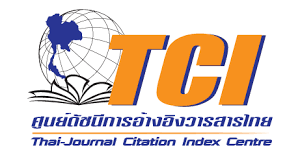Min-Max Policy Implementation for Inventory Management in Steel Supply Sector
DOI:
https://doi.org/10.55003/ETH.420202Keywords:
Min-Max Policy, Inventory Management, Steel Supply SectorAbstract
This study explores the application of the Min-Max inventory management policy to improve stock control efficiency at a steel supply company in Chiang Mai Province, Thailand. The company operates two branches: a central warehouse and a retail store located 40 km apart. Due to the absence of a formal inventory management policy, the retail branch frequently experiences stock shortages, leading to daily replenishment trips from the main warehouse, causing operational inefficiencies and excessive transportation costs. The research focuses on four top-selling products from the company’s highest sales-value category. A Min-Max policy was proposed where the minimum stock level was set based on the average daily demand multiplied by the minimum lead time, and the maximum level based on average demand multiplied by the most likely lead time. Historical demand data from May 2022 to May 2023 were analyzed to determine appropriate Min-Max thresholds. Demand analysis revealed low average daily sales coupled with high variability, indicating the need for a structured inventory approach. Trace-driven simulations were conducted using historical demand data to assess the impact of the Min-Max policy. The simulation results showed a significant reduction in the number of transportation trips and cost compared to the company’s current practice of daily restocking. The study concludes that implementing the Min-Max policy can reduce operational inefficiencies and transportation costs for the company. However, the results are limited to the selected products and may not reflect the entire inventory's performance. The simplicity of the Min-Max policy makes it practical for SMEs, though further refinements such as demand forecasting techniques could optimize its performance in environments with high demand variability.
References
D. C. Bose, “Introduction,” in Inventory management, New Delhi, India: PHI Learning Pvt. Ltd., 2006, ch. 1, pp. 1–5.
J. W. Toomey, “Overview,” Inventory management: principles, concepts and techniques, New York, NY, USA: Springer Science & Business Media, 2000, ch. 1, sec. 1, pp. 1–9.
E. E. Ozguven and K. A. Ozbay, “A secure and efficient inventory management system for disasters,” Transportation research part C: emerging technologies, vol. 29, pp. 171–196, 2013, doi: 10.1016/j.trc.2011.08.012.
N. Hernandoko and P. W. Laksono, “Inventory Control Using ABC Classification and Min-Max Stock Method in The Manufacture of Armored Vehicle Body Hull at PT XYZ,” presented at 8th International Conference on Industrial, Mechanical, Electrical and Chemical Engineering (ICIMECE 2023), Mataram, Indonesia, Oct. 30, 2023, Paper 02009, doi: 10.1051/e3sconf/202346502009.
Y. Zhang and H. -W. Chen, “A min-max policy for multi-item joint inventory replenishment problem: Application to industrial vending machines,” Computers & Industrial Engineering, vol. 172, 2022, Art. no. 108633, doi: 10.1016/j.cie.2022.
D. Muhamad and S. Kodrat Imam Design, “system fuel inventory control in gas stations with the concept of min-max stock level and time phased order point case study gas stations,” in Proc. 1st International Conference on Information Systems For Business Competitiveness (ICISBC) 2011, Semarang, Indonesia, Dec. 8–9, 2011.
S. Chopra and P Meindl, “Supply Chain Management. Strategy, Planning & Operation,” in Das Summa Summarum des Management, C. Boersch, R. Elschen, Eds, Wiesbaden, Germany: Springer Fachmedien Wiesbaden GmbH, 2007, ch. 4, sec. 4, pp. 265–275.
P. D. Larson, “Designing and Managing the Supply Chain: Concepts, Strategies, and Case Studies,” Journal of Business Logistics, vol. 22, no. 1, pp. 259–261, 2001, doi: 10.1002/j.2158-1592.2001.tb00165.x.
S. C. Graves and S. P. Willems, “Supply chain design: safety stock placement and supply chain configuration,” Handbooks in Operations Research and Management Science, vol. 11, pp. 95–132, 2003, doi: 10.1016/S0927-0507(03)11003-1.
Y. Aviv and A. Federgruen, “Stochastic inventory models with limited production capacity and periodically varying parameters,” Probability in the Engineering and Informational Sciences, vol. 11, pp. 107–135, 1997.
E. A. Silver, D. F. Pyke and R. Peterson, “Individual Item with Probabilistic Demand,” in Inventory management and production planning and scheduling, Danvers, MA, USA: John Wiley & Sons, 1998, ch. 6, sec. 6.3, pp. 237–316.
J. Bramel, S. Goyal and P. Zipkin, “Coordination of Production/Distribution Networks with Unbalanced Leadtimes,” Operations Research, vol. 48, no. 4, pp. 570–577, 2000.
S. Nahmias and T. L. Olsen, “Inventory Control Subject to Uncertain Demand,” in Production and operations analysis, Long Grove, IL, USA: Waveland Press, 2015, ch. 5, sec. 5.1, pp. 249–314.
M. Cohen, P. V. Kamesam, P. Kleindorfer, H. Lee and A. Tekerian, “Optimizer: IBM's Multi-Echelon Inventory System for Managing Service Logistics,” Interfaces, vol. 20, no. 1, pp. 65–82, 1990, doi: 10.1287/inte.20.1.65.
W. Voorsluys and R. Buyya, “Reliable Provisioning of Spot Instances for Compute-intensive Applications,” in 2012 IEEE 26th International Conference on Advanced Information Networking and Applications, Fukuoka, Japan, 2012, pp. 542–549, doi: 10.1109/AINA.2012.106.
S. P. Ghodake, V. R. Malkar, K. Santosh, L. Jabasheela, S. Abdufattokhov and A. Gopi, “Enhancing Supply Chain Management Efficiency: A Data-Driven Approach using Predictive Analytics and Machine Learning Algorithms,” International Journal of Advanced Computer Science and Applications, vol. 15, no.4, pp. 672–686, 2024, doi: 10.14569/IJACSA.2024.0150469.
Downloads
Published
How to Cite
Issue
Section
License
Copyright (c) 2025 School of Engineering, King Mongkut’s Institute of Technology Ladkrabang

This work is licensed under a Creative Commons Attribution-NonCommercial-NoDerivatives 4.0 International License.
The published articles are copyrighted by the School of Engineering, King Mongkut's Institute of Technology Ladkrabang.
The statements contained in each article in this academic journal are the personal opinions of each author and are not related to King Mongkut's Institute of Technology Ladkrabang and other faculty members in the institute.
Responsibility for all elements of each article belongs to each author; If there are any mistakes, each author is solely responsible for his own articles.






